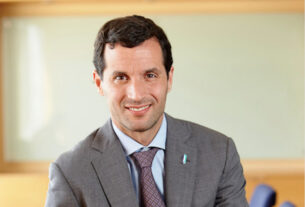The COVID-19 pandemic has had an enormous effect upon health and care globally. Not only have we seen very significant mortality as a result—in COVID-19 and non-COVID-19 populations—but we have also seen transformational change in in the way we deliver care.
We now accept that these changes to the way health systems operate and interface with patients are likely to persist irrespective of when we bring this pandemic under control.
But what are likely to be the changes post-pandemic that have the greatest effect on the day-to-day experience of clinicians and patients? What will be tangibly different?
The nature of the consultation is in the process of being rethought and redesigned. The pandemic has fundamentally altered the nature of the doctor-patient relationship. A common feature in most countries was the dramatic fall in presentations of non-communicative diseases like cardiovascular and metabolic diseases. This is not because people did not necessarily develop symptoms associated with these conditions, but more because they simply did not seek help. The resultant excess deaths tell a sad story as a result.
The Positives
The effect of all of this is that telehealth suddenly got projected into mainstream activity and the whole episodic nature of how we care for these patients is being redesigned with an eye to a more life course and precise approach where we exploit the power of digital communication to maintain and encourage behavioural change and more effective treatments.
Artificial intelligence has also come of age. Suddenly it has started to be deployed in a whole series of arenas and the levels of acceptance have been quite surprising. This bodes very well for the future as given the multiplicity of theatres we have deployed this technology, we are now getting more adept at understanding what works and where the pitfalls to deployment are.
The science has also come of age. The novel approaches to vaccination are already starting to be deployed in other areas of medicine and with the speed we have begun to consider normal. There are already new candidates for vaccinating HIV, and treatments for cancers will follow very soon. We are in an emerging “golden age” of vaccines, given the remarkable speed of discovery, trial then deployment of novel vaccines for COVID-19
The Negatives
There have of course, also been some less successful experiences. Levels of burnout amongst clinical staff of all descriptions have increased. This is not only associated with the punishing workload they have been subjected to as they put themselves in the face of danger to protect us, but also because many of them were suddenly faced with coping with telehealth and all other aspects of this new digital world with such speed that the levels of properly thought through and directed training left a lot to be desired.
Trust in governments and in health systems has also suffered. It is difficult to see who has had a “good pandemic.” There have been examples of deployments, like testing and trace initiatives which were more successfully deployed. Also, some countries and health systems were particularly successful at vaccination initiatives, but no country or health system could look back and was in the top quartile of success in every instance.
What We Do Next
The new world we are entering post-pandemic promises to be very different as a result. However, we are now far more prepared for the next pandemic or even the next mutation. Our scientific infrastructures, both in lab testing, production of vaccinations and in therapeutic interventions have far more resilience as a result of being stress tested. The same is true for availability of personal protective equipment for clinical staff. Let’s hope we will never see clinical staff putting themselves and their patients at risk by having nothing to protect them. Lessons have been learnt and systems will be strengthened all over the world to ensure that the next pandemic is managed better.
The next great frontier in this new post-pandemic world is the interface between the patient and the health and care system. We will overcome the issues which are causing us concern at present, like burnout, like cybersecurity, interoperability and other technological hurdles. What will need most of our attention are the softer issues which of course are always termed soft as most people consider them too intangible to encapsulate and too complex to manage. The challenge on improving the interaction between clinician and patient or citizen, especially in a virtual world will continue to challenge us as will the nature and appropriate mechanism to deliver lasting engagement and meaningful sustained behavioural change in individuals to reduce their risk factors.
This is all about to start to be articulated. I suggest you fasten your seatbelts and wear your masks as it promises to be an exciting ride.
*MD, Chief Clinical Officer, HIMSS
Source: HIMSS




